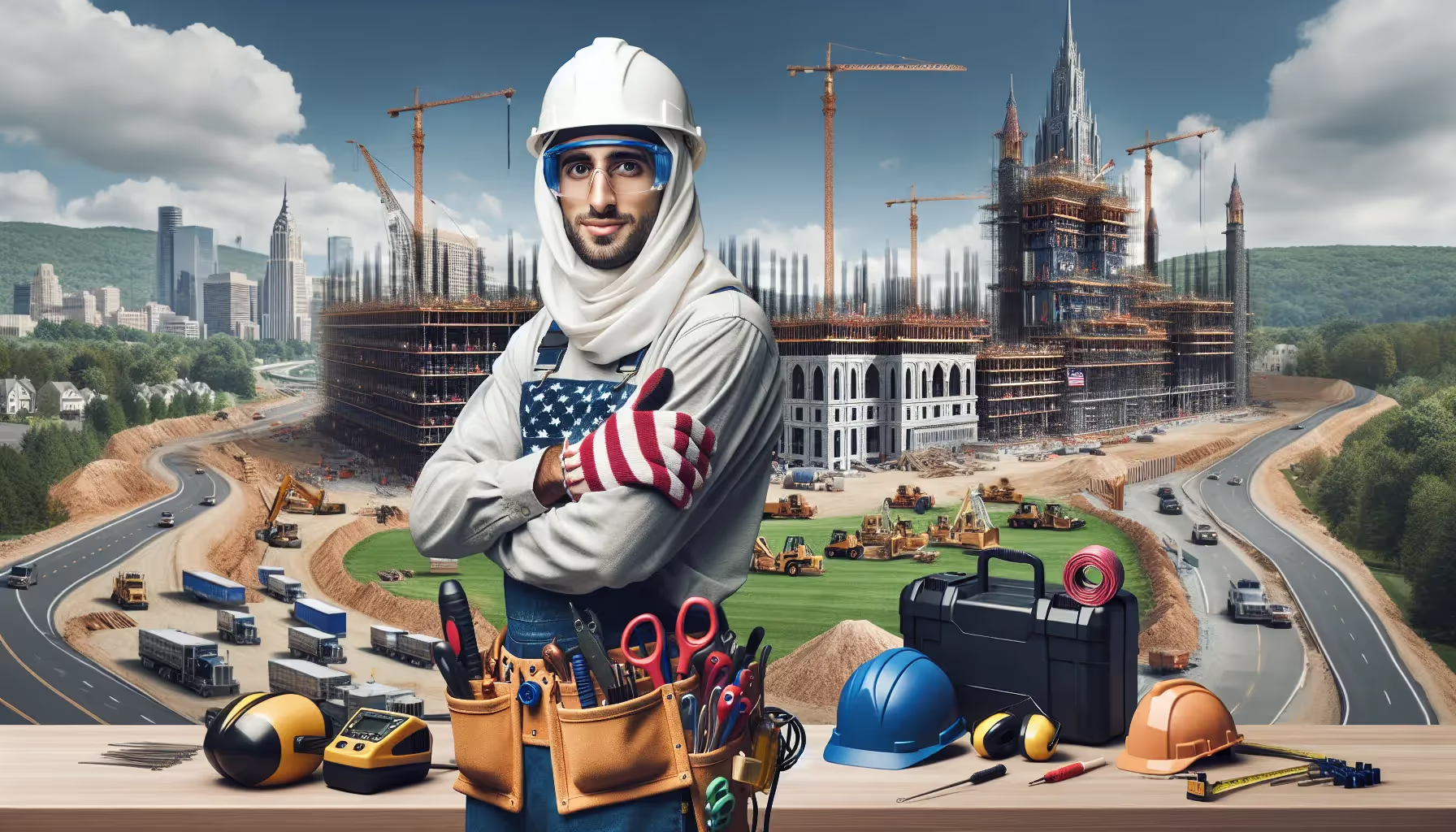Key Takeaways
- Essentiality of Safety Gear: Safety gear is critical for technicians, reducing workplace injuries by up to 40% and ensuring their protection against various workplace hazards.
- Legal Compliance: Providing proper safety gear is not just a best practice but a legal requirement that fosters a safer work environment and reduces risks of penalties.
- Types of Safety Gear: Essential safety equipment includes hard hats, gloves, eye protection, respiratory protection, hearing protection, and safety footwear, each serving specific protective functions.
- Conduct Regular Audits: Implementing regular safety gear audits ensures that all personal protective equipment (PPE) is in good condition and available, minimizing risks associated with worn-out gear.
- Training is Key: Continuous training and certification programs help technicians understand how to use and maintain safety gear properly, reinforcing a culture of safety within the workplace.
- Promote Safety Culture: Encouraging accountability, open communication, and regular safety drills cultivates a proactive safety culture where all team members contribute to a safer work environment.
Safety gear isn’t just an option; it’s a necessity for technicians working in potentially hazardous environments. Studies show that proper safety equipment can reduce workplace injuries by up to 40%. With such a significant impact on health and productivity, ensuring our team is well-equipped should be a top priority.
When technicians are adequately protected, not only do we comply with safety regulations, but we also foster a culture of care and responsibility. From helmets to gloves, each piece of gear plays a critical role in preventing accidents. In this article, we’ll explore the essential safety gear every technician needs and share practical tips on how to ensure they’re properly equipped for the job.
Importance Of Safety Gear
Safety gear plays a crucial role in protecting technicians from hazards in the workplace. We understand that the right equipment can significantly reduce workplace injuries, with statistics indicating reductions of up to 40%. Proper safety gear creates a culture of safety and responsibility, making our workplaces not just compliant but thriving environments for our teams.
Protecting Technicians From Hazards
Equipping technicians with appropriate safety gear safeguards them from various risks associated with their tasks. Hard hats shield against head injuries, while gloves protect hands from sharp objects or chemicals. Safety goggles prevent eye injuries, and high-visibility clothing ensures visibility in low-light conditions. These vital tools help us all reach our goals and keep our teams safe. We often think of safety gear as a burden, but isn't it more of a superhero cape for our technicians?
Legal Compliance And Occupational Safety
Providing safety gear isn't just a best practice; it’s a legal obligation. Many regulations mandate that companies supply their technicians with necessary protection. Compliance means fewer penalties and a healthier work environment. We commit to prioritizing our technicians’ welfare, making us better neighbors in the service community. If we think about it, safety gear can be the difference between a hefty fine and a job well done. Let's engage: what measures do you take to keep your team safe? We’re all in this together.
Types Of Essential Safety Gear

Safety gear consists of key equipment that protects technicians from workplace hazards. Understanding these types can guide us in selecting the right tools for the job.
Personal Protective Equipment (PPE)
PPE includes items like hard hats and gloves that shield technicians from risks.
- Hard Hats: These protect the head from falling objects. They’re a must on construction sites where overhead hazards exist.
- Face Shields or Eye Protection: These safeguard eyes from chemicals and flying debris. We’ve all seen someone squinting at a splash; let’s prevent it.
- Respiratory Protection: This prevents inhaling harmful substances like dust or fumes. In environments with strong odors, a good mask is a friend.
- Ear Protection: Workers in noisy sectors benefit from earplugs. Strange noises shouldn’t drown out our voices or important signals.
- Gloves and Body Protection: Gloves protect hands from cuts and burns. We’ve all had a rough encounter with sharp edges; let’s avoid that mess.
- Safety Footwear: Steel-toed boots help protect feet from heavy falling tools. Plus, they often come with good traction—especially handy when juggling tasks.
Tools And Equipment Safety Features
Tools and equipment also need safety features entailed in their design.
- Guards on Machinery: These keep hands and loose clothing away from moving parts. They’re crucial in manufacturing settings.
- Safety Valves: These prevent dangerous pressure buildup in tools. Think of them as the pressure relief friends we never knew we needed.
- Electrical Insulation: Insulating materials on tools minimize shock risks, which is vital for those working with electrical equipment.
By understanding these essentials, we create safer work environments and promote technician well-being. It’s teamwork that keeps us safe. How will we step up our safety game together?
Ensuring Proper Equipment For Technicians

Safety gear is crucial for technicians in various work environments. This equipment shields them from hazards and fosters a culture of care within our team. Proper equipment includes insulated gloves, hard hats, safety glasses, steel-toed boots, ear protection, and high-visibility clothing. These items significantly reduce workplace injuries, often by up to 40%. Let’s explore how we can keep our technicians equipped for success.
Conducting Safety Gear Audits
Conducting regular safety gear audits keeps our team safe. Daily inspections of personal protective equipment (PPE) highlight any damaged items needing replacement. If an item shows wear, replacing it immediately removes potential risks. Tracking our PPE inventory ensures we always have the necessary gear available. Using effective inventory management simplifies this process, preventing any last-minute panic before a job.
Training And Certification Programs
Training and certification programs cultivate a knowledgeable workforce. Familiarizing technicians with proper use, maintenance, and limitations of PPE creates confidence. Hosting regular training sessions promotes hazard identification and tool use, making safety part of our work culture. Conducting quarterly training or more frequently ensures technicians remain sharp and up to date. Certification programs prove technicians understand safety procedures, validating their competence. This proactive approach enhances not just safety but also the effectiveness of our team in the field. By advancing our safety training, we support personal and professional growth.
Creating A Safety Culture

Creating a safety culture is vital for fostering a workplace where technicians feel valued and protected. A strong culture goes beyond compliance; it promotes collaboration and a sense of community among workers.
Encouraging Accountability
Accountability builds trust. We set clear expectations for PPE use and hold everyone responsible for adhering to safety protocols. Our technicians need to know that wearing safety gear isn’t just a recommendation; it’s a requirement. Regular inspections of gear keep it in top condition. Think of it like checking the oil in a car; if we neglect it, we risk a breakdown in safety, which can lead to injuries or accidents. Open communication allows us to address concerns quickly. Workers should feel comfortable discussing safety without fear of repercussions. Who wouldn’t feel better knowing they can voice their worries?
Regular Safety Drills And Assessments
Regular safety drills and assessments maintain awareness and readiness. Think of them as our training wheels; they keep us steady until we’re fully confident. We conduct regular training sessions to teach proper equipment use. Simulating real-life scenarios prepares technicians for anything that might come their way. Routine workplace assessments identify potential hazards. By being proactive, we can adjust our safety measures before issues arise. Safety is a team effort, and it takes each one of us to contribute to a culture where everyone looks out for each other. Would you rather be part of a culture that prioritizes safety or one that waits for accidents to happen?
By prioritizing accountability and conducting regular drills, we cultivate a well-equipped workforce ready to tackle their tasks with confidence.
Conclusion
Ensuring our technicians are properly equipped with safety gear is a vital part of our commitment to workplace safety. By prioritizing the right equipment and fostering a culture of accountability we not only protect our team but also enhance overall productivity. Regular audits training and open communication help us maintain high safety standards and keep everyone informed.
Let’s remember that safety isn’t just a requirement; it’s a shared responsibility that reflects our values as an organization. Together we can create a safer work environment where our technicians feel valued and empowered to perform their best.
Frequently Asked Questions
Why is safety gear essential for technicians?
Safety gear is crucial for technicians in hazardous environments as it can reduce workplace injuries by up to 40%. It protects against various risks, ensuring compliance with safety regulations while promoting a culture of care and responsibility.
What are the types of essential safety gear?
Essential safety gear includes Personal Protective Equipment (PPE) like hard hats, gloves, safety goggles, face shields, respiratory protection, ear protection, and safety footwear. These items safeguard technicians from potential injuries.
How do companies fulfill their legal obligations regarding safety gear?
Companies are legally required to provide necessary safety gear to their technicians. Fulfilling these obligations helps avoid penalties and fosters a healthier work environment by ensuring all personnel are adequately protected.
How often should safety gear be inspected?
Regular inspections of safety gear should be conducted daily to ensure all Personal Protective Equipment (PPE) is in good condition and available when needed. This proactive approach helps prevent last-minute shortages and maintains safety standards.
What role do training and certification programs play?
Training and certification programs educate technicians on the proper use and maintenance of safety gear. They enhance knowledge of safety procedures, improve team effectiveness, and validate understanding, ultimately boosting workplace safety.
How can a safety culture be promoted in the workplace?
Promoting a safety culture involves setting clear expectations for PPE use, holding individuals accountable, encouraging open communication, and conducting regular safety drills. This fosters an environment where technicians feel valued and protected.
Why are safety gear audits important?
Safety gear audits are essential for ensuring that all PPE is functional and ready for use. They help identify any gear that needs repair or replacement, ensuring a consistent supply of safety equipment and enhancing overall workplace safety.
What is the significance of teamwork in safety practices?
Teamwork enhances safety practices by fostering open communication, accountability, and shared responsibility. When technicians work together, they can better identify risks, address safety concerns, and maintain a safer work environment for everyone.






